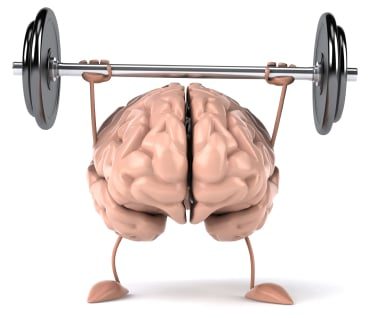 Boost Memory: Eat these Foods
Boost Memory: Eat these Foods
A brain is a terrible thing to waste especially when it’s yours. Unfortunately, losing our mental faculties is becoming more frequent, but the odds are still in your favor that you will not suffer from dementia as you age. Eating better may improve the odds that you will remember your name and the name of your spouse and kids. So what foods should you eat to boost memory?
First, it’s important to recognize that inflammation is a root cause of many chronic conditions including dementia. So you want to eat foods that at a minimum do not increase the inflammatory load on the body. Preferably, though, should you consume foods that have antioxidant and anti-inflammatory properties.
Here are our choices for foods that boost memory.
- Fish
- Berries
- Eggs
- Dark green leafy vegetables
- Apples
- Chocolate
- Olive oil
- Red wine
- Nuts
Fish
Fish is the ultimate brain food. Fish is high in omega-3 fatty acids, DHA, and EPA. Higher levels of DHA and EPA are linked to bigger brain sizes. These omega-3 fatty acids are potent anti-inflammatories. If you don’t like it – take a high-quality fish oil supplement. Consuming omega-3 fatty acids may be the best way to boost memory.
Fish with high levels of omega-3 include:
- tuna
- herring
- salmon
- sardines
- mackerel
Berries
Blackberries, blueberries, raspberries, strawberries – it doesn’t matter. Berries are a great source of antioxidants called polyphenols which may prevent age-related cognitive decline. Berries improve communication between brain cells. Blueberries inhibit the development of certain proteins associated with Alzheimer’s disease. They have also been shown to improve short-term memory, visual memory, and spatial relationship understanding in humans.
Eggs
The yolk in eggs is rich in choline. Choline is a precursor of acetylcholine which is a neurotransmitter. Acetylcholine improves memory and many dementia drugs are designed to prevent the metabolism of acetylcholine.
Dark Green Leafy Vegetables
Dark green leafy vegetables high in nitrites and nitrates increase nitric oxide production which improves blood flow, and thus oxygen delivery to all tissues including the brain. They are high in vitamin E, a potent antioxidant.
Apples
Apples contain quercetin. Quercetin is a cousin of resveratrol and has anti-inflammatory properties. Like resveratrol, quercetin activates sirtuin genes. Sirtuin genes produce enzymes that improve the metabolism and efficiency of many physiological processes. Quercetin is primarily found in the skin of the apple – so don’t discard the peels. Quercetin carries zinc into cells becoming an important nutrient in the fight against viral infections.
Chocolate
Ah, my favorite – chocolate. Chocolate is an antioxidant and increases nitric oxide – this is more true of dark chocolate. Nitric oxide improves blood flow and that reduces heart disease. Thus, chocolate improves blood flow – but don’t get carried away. About half an ounce is all you need.
Olive oil
Olive oil contains a compound called hydroxytyrosol which is an antioxidant. Hydroxytyrosol protects brain cells (neurons) from premature degeneration.
Red wine
Red wine contains resveratrol which has antioxidant and anti-inflammatory properties. In animal studies, resveratrol has been shown to reduce plaque formation seen in Alzheimer’s disease as well as protect against brain damage during a stroke.
Nuts
Eating nuts lowers the risk of cognitive decline associated with aging. They are full of antioxidants, aid in weight loss, lower cholesterol, and reduce inflammation. Brain-boosting nuts include almonds, Brazil nuts, cashews, chestnuts, hazelnuts, peanuts, pecans, pistachios, and walnuts.
Food for Thought
A while back I heard a physician speak on the topic of dementia. I cannot recall his name (perhaps I have dementia) but he’s an expert in dementia research. We often hear of keeping the brain active by doing crossword puzzles, playing board games, and more.
He thought one of the best things we can do for our brains is to always be engaged in learning a new activity. This causes the brain to make new connections and improves the overall performance and efficiency of the brain. Doing math or crossword puzzles simply reinforces parts of the brain that probably are already functioning well.
Learning new activities forces us to use neglected parts of the brain. It strengthens our “weakest links”. New learning does not need to be mental or cognitive. It can be physical and one of the best physical activities to boost memory is ballroom dancing.
So feed your hunger and become a life-long learner. You can boost memory.
See related articles.
Memory Loss And Strength Training
6 Health Benefits Of Blueberries
